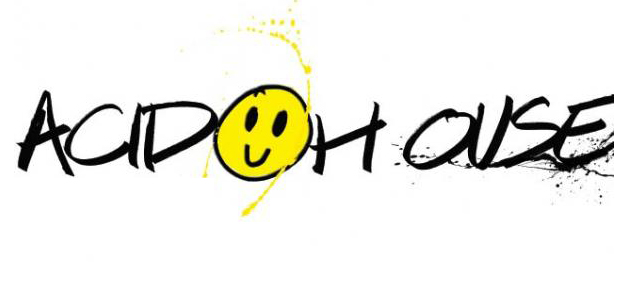
Acid House was first heard in Chicago discos during the mid 1980s. Like many things related to the genre, the origins of the name “Acid House” remain up for debate. One view is that the term was coined to define the electro-psychedelic sounds produced by the Roland TB-303, which was the sequencer used to produce many early Acid House tracks. The first recording to be identified as Acid House, notably, was the 303-driven “Acid Trax” by Chicago-based Phuture. However the debate still rages as to whether the genre named the track or the track named the genre.
Acid House History
The Acid House scene in Chicago would be short-lived nonetheless. Like punk rock a decade earlier, Acid House was a genre invented in America that went on to become more fully developed in the UK – specifically, in London.
 Chicago Acid House’s repetitive beats, trance-inducing vibe and squelchy Roland 303 sounds were an instant hit with a London club scene that was looking to turn a page from the generic synth-pop dance music of the day. By 1987 Acid House had firmly established itself on the London club scene thanks to venues like The Trip and Shoom. Acid House reached its peak in popularity the following year, when the movement’s symbol, a yellow smiley face, became one of the most ubiquitous images in the UK.
Chicago Acid House’s repetitive beats, trance-inducing vibe and squelchy Roland 303 sounds were an instant hit with a London club scene that was looking to turn a page from the generic synth-pop dance music of the day. By 1987 Acid House had firmly established itself on the London club scene thanks to venues like The Trip and Shoom. Acid House reached its peak in popularity the following year, when the movement’s symbol, a yellow smiley face, became one of the most ubiquitous images in the UK.
During this era, that came to be known as the Second Summer of Love, Acid House was even credited for helping to end the era of football hooliganism in the UK. The theory was that many of the disenfranchised youths who’d previously been taken to hanging out on the terraces of soccer stadiums looking for punch-ups, had instead begun dropping Es and losing their minds on the dance floors of Acid House clubs. There may be an element of truth to this, as just about anyone who was young and out for fun in the UK at the time got turned onto Acid House to one degree or another.
However just like the original Summer of Love, this period was also to be short-lived. It was during this same time that a sanitized version of the Acid House sound found its way into the upper reaches of the UK pop charts, through singles by bands like M/A/R/R/S, Technotronic and S’Express. As with most underground movements, this mainstream acceptance signaled the beginning of the end for Acid House.
Around about this same time, the tabloid media in the UK turned on the scene and began to publish articles on the perils of ecstasy. Eventually the police started cracking down on Acid House parties. The scene was forced to go underground, with promoters throwing one off parties in illicit, secret locations. This would eventually give rise to the rave scene that would prove to be Acid House’s successor.
Acid House and Drugs
Whether the name Acid House inspired the drug use or the drugs inspired the name remains another of the key debates regarding Acid House. Not that it really mattered for long, because by 1988 the kids experiencing Acid House in the UK were drugged to the gills on acid, and the ecstasy that was rampantly popular at the time.
Key Acid House Artists
A Manchester group named after a drum machine, 808 State were one of the most successful acts to emerge from the Acid House era. In 1989 the band had a top 10 hit in the UK with “Pacific State.” That same year founding member Gerald Simpson left to strike out on his own. Under the name of A Guy Called Gerald, Simpson rapidly established himself as another key Acid House artist.
Like the Stone Roses, The Shamen were a psychedelic indie band that discovered dance music. However, while the Roses became a psychedelic indie band influenced by dance music, the Shamen became an Acid House dance group influenced by psychedelic indie music. The Shamen were one of the first bands to put on shows blending live instruments with DJs spinning club tracks.
Essential Tracks
“Move Any Mountain” by The Shamen, “Pacific State” by 808 State and “Voodoo Ray” by A Guy Called Gerald remain definitive singles from the Acid House era. The KLF also established themselves as heavyweights of the genre with the release of their 1988 acid anthem “What Time is Love.” “Frequency” by Little Louis, meanwhile, with its sparse and atmospheric deployment of the Roland 303, remains the very prototype of a Chicago Acid House single.
Acid House’s Legacy
Acid House had a lasting impact on dance music as a whole. It helped spawn every major subgenre that would emerge in its wake including: trance, Goa Trance, trip-hop, techno and big beat. During the ‘90s and early ‘00s producers like Felix the House Cat and bands like the Alabama 3 kept the Acid House sound alive. The Alabama 3’s song “Woke Up This Morning” was famously used in the opening credits for The Sopranos.




